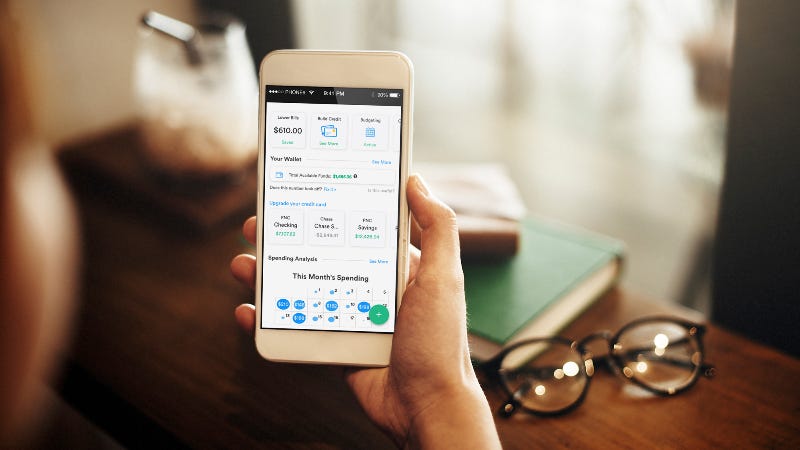Preventing overdraft fees

The Bankrate promise
At Bankrate we strive to help you make smarter financial decisions. While we adhere to strict , this post may contain references to products from our partners. Here's an explanation for .
If you’re not conscious of it, you could be incurring hundreds of dollars in bank fees a year. Monthly service fees, out-of-network ATM fees and — one of the biggest charges — overdraft fees can eat into your balance without you even realizing it.
Over a quarter (27 percent) of checking account holders pay fees associated with their accounts every month. On average, overdraft fees specifically cost $29.80, according to Bankrate’s latest checking account and ATM fee study. With one overdraft fee a month, that would amount to a nearly $360 loss in one year.
“These banks get away with charging massive overdraft fees for effectively doing nothing,” says Thomas Smyth, founder and CEO at Trim, now part of OneMain Financial.
In many cases, you might not even realize you overcharged your account. But there are steps you can take to maintain greater awareness of your finances and prevent incurring an overdraft fee. Many banks are also reducing or eliminating this fee altogether.
Key banking fee statistics
- On average, fee-paying checking account holders pay $24 a month in bank fees, which adds up to $288 a year.
- Nearly half (48 percent) of those paying monthly bank fees say those fees are taking a toll on their recession preparedness.
- Regarding the ways bank fees are getting in the way of recession preparedness, 30 percent of respondents said they could use the lost money for paying down debt and 29 percent said it would go to emergency savings.
- Despite the persistence of bank fees for some, most consumers (73 percent) have free checking accounts and pay no monthly fees.
- The number of free checking accounts has decreased overall, though, from 48 percent in 2021 to 46 percent in 2022.
- Those most likely to pay checking account fees are Gen Zers (46 percent) followed by millennials (42 percent).
- Millennials are paying the most in monthly fees — $28 — while Gen Zers pay $25 a month on average, Gen X pays $17 and baby boomers pay $22.
Sources: Bankrate’s 2023 banking survey, Bankrate’s 2022 checking account and ATM fee study
Overdraft fee
An overdraft fee is a type of penalty fee that financial institutions charge when a customer spends more than they have available in their bank account. The bank temporarily provides funds to cover the charge, but the account will show a negative balance and must be paid back along with the fee.
Even though some banks have taken strides to eliminate or reduce their overdraft fees, 96 percent of accounts still charge this fee. Moreover, although the average overdraft fee has gone down somewhat in the last year, it’s still $29.80.
Average overdraft fees were on the rise up until 2022. Notably, 2021 saw a record high for the average overdraft fee, at $33.58. While the average fee dropped in 2022, it’s still common for banks to charge $35 for an overdraft.
The age group most susceptible to incurring bank fees is Gen Z (ages 18 to 26). The table below highlights the percentage of consumers in each generation that pay bank fees every month. Note that the data accounts for all checking account fees, which includes overdraft fees.
| Generation | Percentage who pay monthly fees |
|---|---|
| Gen Z (ages 18-26) | 46% |
| Millennials (ages 27-42) | 42% |
| Gen X (ages 43-58) | 22% |
| Baby boomers (ages 59-77) | 14% |
Overdraft fees (and other banking fees) can hold you back from progress on other financial responsibilities. When asked how they would utilize money if it weren’t lost to these fees, the highest number of consumers (30 percent) said they would pay down debt. Other common answers included saving for emergencies, saving for a financial goal and discretionary spending.
Overdraft protection
Overdraft protection is the service that allows you to overdraw a bank account and pay for the overdrawn amount using funds from a linked bank account, most likely a savings account. Usually, you can opt in or out of overdraft protection — those who opt out will simply have the transaction declined. The bank may or may not charge a fee for this service, but generally the fee is lower than a standard overdraft fee.
Just because you opt out of overdraft protection doesn’t mean you’re immune to incurring a fee, though. When a bank charges a fee for a declined transaction, this is called a nonsufficient funds (NSF) fee. NSF fees tend to be slightly lower than overdraft fees, but the average in 2022 was still $26.58.
It might be a good idea to opt in for overdraft protection if you’re concerned about being declined for a purchase when there isn’t enough money in your account and you don’t want to pay a high overdraft fee or sit with a negative account balance. However, it’s important to consider what that could cost you in fees. If your bank’s NSF fee is significantly lower than the overdraft protection fee, then it could be worth it to get declined for a transaction and avoid the higher fee.
Checking account service fee
Many checking accounts charge a monthly service or maintenance fee. There are often ways to avoid this fee, such as by maintaining a minimum balance in the account or receiving a minimum amount in monthly direct deposits.
Consumers typically have to pay more per month for interest-bearing checking accounts. The average monthly service fee for interest checking accounts was $16.19 in 2022, while the average for non-interest checking accounts was $5.44.
For non-interest checking accounts, the average minimum balance needed to avoid this fee was $539. Meanwhile, the average minimum balance needed to avoid an interest checking account’s monthly fee was a steep $9,658.
Bankrate’s consumer banking survey found that millennials pay the most on average per month in checking account fees — $28 a month, compared to the overall average of $24 a month. Those amounts include service fees among other checking account fees.
Having a checking account doesn’t require paying a monthly service fee, though — that depends on where you bank. Of non-interest checking accounts, for example, 46 percent don’t charge a monthly service fee at all. There are plenty of free checking account options to choose from that can help you save on banking costs — though that may mean switching to a new bank.
ATM fees
There are typically two fees you pay if you use an ATM that’s not in your bank’s network: one is an out-of-network fee charged by your bank, and the other is a surcharge from the owner of the ATM.
As of 2022, just over 40 percent of banks do not charge their customers for out-of-network ATM transactions, which is up more than 8 percent since 2019.
Key ATM usage statistics
- For banks that charge an out-of-network ATM fee, the average is $1.52. (Bankrate)
- The average surcharge imposed by banks for non-customers who use their ATMs is $3.14. (Bankrate)
- The average total ATM charge per out-of-network transaction is $4.66, the highest it’s been since 2019. (Bankrate)
- Almost half (40 percent) of ATM users perform an ATM transaction eight to ten times a month. (National Cash Systems)
ATM fees by year
Other banking fees
Some other common bank account fees include:
- Wire transfer fee: Wire transfers are a way to send money between banks, but they come with a high fee. The average cost to send money by wire domestically is about $26.
- Paper statement fee: Banks may charge a fee for receiving paper statements. Typically, though, it’s free to opt out of paper statements and receive only electronic statements instead.
- Early closeout fee: One reason it’s important to research accounts before opening one is that you may get charged if you decide to close the account too early. There’s usually a fee for closing the account within 90 to 180 days.
- Inactivity fee: Also called a dormancy fee, this is charged when your account has no activity for a certain period of time. It can range between $5 and $20 and may be incurred after anywhere from a few months to a year of inactivity.
- Foreign transaction fee: Credit cards aren’t the only form of payment that rack up foreign transaction fees — some banks charge a fee for paying with a debit card internationally, too.
Apps that can help manage fees
Rocket Money: Rocket Money sends alerts to users when they get overdraft fees. It also provides a script for users to use when speaking to their bank for requesting overdraft fee refunds. The app can also cancel unwanted subscriptions and automate savings transfers, among other things.
Harvest: An app provided by the software company Acorns, Harvest can help negotiate refunds for bank fees on your behalf. It typically takes two to five days for the app to negotiate any bank fees. Note that you need Harvest Premium to take advantage of the bank fee negotiation feature, which costs $34 annually as of the time of this review.
Dave: Dave is a fintech company that offers cash advances to help you sidestep overdraft fees. Instead of paying interest, you will pay $1 per month and an optional tip to get a small cash advance ahead of your next payday. Dave also alerts you if it believes you are in danger of getting charged an overdraft fee as well as connects you to side hustles to make more money.
Your bank’s app: Many banks, including U.S. Bank and Bank of America, now offer alerts through their mobile apps that caution consumers when they are at risk of spending more than what’s in their bank account. Some of these alerts go deeper than saying you have a low balance — they predict what your balance will be in the coming days.
Bottom line
Although many banks charge fees for things like overdrawing your account, those fees are usually avoidable with some extra precaution around your spending and account activity. You can take advantage of an app to help avoid fees, including your own bank’s app. Consider setting up low balance alerts on your mobile banking app, for example, so you’ll know not to spend too much when your balance falls below a specified threshold.
It’s also worth taking some time to review your bank account’s fees and disclosures. That way, you can be aware of when your bank might charge you. You might even realize you’re being charged much more in fees than what other banks are charging, at which point you may want to look into other checking account options with no or lower fees.
Related Articles



